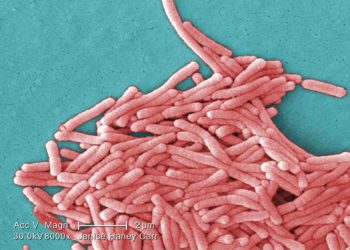Intravenous contrast may not increase risk of acute kidney injury
1. In a large patient cohort, the use intravenous iodinated contrast was not associated with a significantly increased risk of acute kidney injury (AKI), dialysis, or mortality, even among patients with significant renal risk factors.
2. The incidence of AKI following CT imaging was 5% and increased as a function of comorbid risk factors but remained independent of contrast administration.
Evidence Rating Level: 2 (Good)
Study Rundown: Traditional teaching suggests that administration of intravenous iodinated contrast poses a significant risk of contrast-induced nephropathy (CIN), particularly among patients with preexisting renal risk factors. However, the initial identification of such risk was derived in studies involving high-dose intraarterial contrast administration, while recent studies have been building a body of evidence to support that routine administration of intravenous contrast agents dosed according to specific patient characteristics may be safer than previously suspected.
The current study sought to compare the incidence of AKI and 30-day incidence of dialysis, or mortality following routine non-contrast and intravenous contrast-enhanced CT imaging in a large patient population matched for baseline serum creatinine and risk factors for kidney injury. The authors found that the incidence of AKI, emergent dialysis, or 30-day mortality did not significantly differ between patients receiving contrast versus those who did not. Even in a subgroup analysis of patients traditionally at higher risk of CIN, such as those suffering from diabetes mellitus, chronic kidney disease, prior AKI, or congestive heart failure, no independent risk was associated with contrast administration, though the baseline risk of renal dysfunction increased with the presence of comorbidities. The analysis was limited by potential confounders such as inconsistent charting of nephrotoxic drug use or pre-contrast hydration status among subjects. Additionally, sensitivity of the study was limited by the low incidence of dialysis among subjects in both groups, and the use different contrast agents depending on baseline subject creatinine level, producing result heterogeneity. Future large-scale studies to confirm the safety of iodinated contrast agents are still needed, particularly to identify a dose-specific threshold risk for CIN.
Click to read the study in Radiology
Relevant Reading: Risk of Intravenous Contrast Material–mediated Acute Kidney Injury: A Propensity Score–matched Study Stratified by Baseline-estimated Glomerular Filtration Rate
In-Depth [retrospective case-control]: This study retrospectively examined a total of 21,346 patients who underwent CT imaging over a 10-year period at a single academic medical center, divided into two equal groups (contrast and non-contrast) and matched 1:1 by AKI risk propensity scores. Subgroup analysis further divided each group according to serum creatinine and high-risk comorbidities, including diabetes mellitus, prior AKI, chronic kidney disease, and congestive heart failure.
The incidence of AKI within 24-72 hours of imaging and emergent dialysis or mortality within 30 days was determined for each group. The overall incidence of AKI was 5%, and did not significantly differ between the contrast and non-contrast groups (4.8% and 5.1%, respectively; P=0.38). Patients with one of the four major comorbid conditions had increased rates of AKI, ranging from 6.9% among diabetics to 12.1% among those with prior AKI, though no significant increased risk was suggested by a peak odds ratio of 1.10 (P=0.36). Similarly, 30-day incidence of emergent dialysis (OR 0.96, P=0.89) and mortality (HR 0.97, P=0.45) were not significantly different between the contrast and non-contrast groups, though the rarity of episodes of dialysis limited generalizability of study results.
Among patients who did suffer from AKI independent of contrast administration, an increased risk of emergent dialysis (OR 15.75, P<0.0001) and 30-day mortality (HR 4.51, P<0.0001) was observed, and these baseline risks were exaggerated among patients with increased baseline serum creatinine, diabetes, prior AKI, chronic kidney disease, or congestive heart failure.
Image: PD
©2012-2014 2minutemedicine.com. All rights reserved. No works may be reproduced without expressed written consent from 2minutemedicine.com. Disclaimer: We present factual information directly from peer reviewed medical journals. No post should be construed as medical advice and is not intended as such by the authors, editors, staff or by 2minutemedicine.com. PLEASE SEE A HEALTHCARE PROVIDER IN YOUR AREA IF YOU SEEK MEDICAL ADVICE OF ANY SORT.






![Combo angiotensin-neprilysin inhibitor superior to enalapril in heart failure [PARADIGM-HF trial]](https://www.2minutemedicine.com/wp-content/uploads/2014/09/Angiotensin-75x75.jpg)
